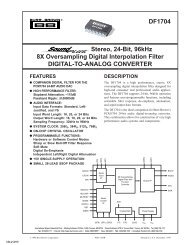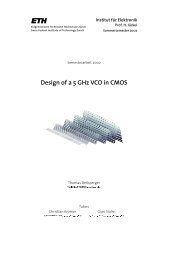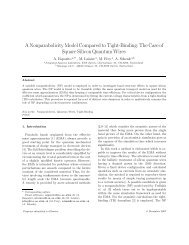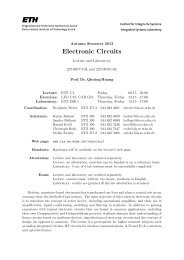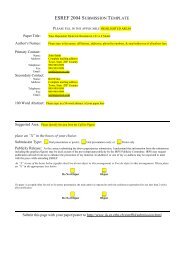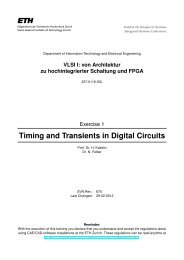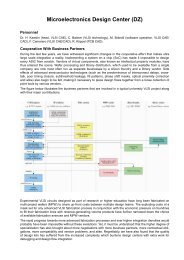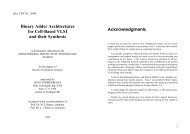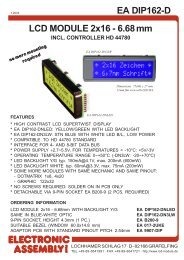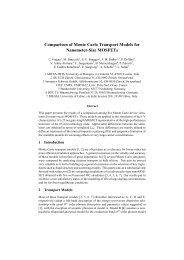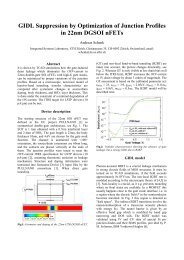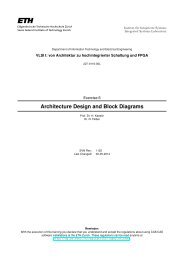SoC Encounter for Designers II - Integrated Systems Laboratory
SoC Encounter for Designers II - Integrated Systems Laboratory
SoC Encounter for Designers II - Integrated Systems Laboratory
You also want an ePaper? Increase the reach of your titles
YUMPU automatically turns print PDFs into web optimized ePapers that Google loves.
12.3 Evaluate the Physical DesignTake the time to examine the routing. This is the main feedback you need <strong>for</strong> a second back-enditeration. Try to view all metal lines separately to see how congested your routing is. If you see a lotof Metal-6 (orange) you are probably close to the density limit. In our design you should not noticeany congestion and Metal-6 will barely be used. If your design routed without problems and therouting was rather sparse then the next time you could assign a smaller core area and increase therow utilization. On the other hand if the design barely routed you have found the limits, in a seconditeration you might consider assigning a little more core area timing degrades with congestion.Check the connections of your macro-cells and pads, this may give you an idea how to place themacro-cells the next time around. You need to get used to evaluating the result of different back-enddesign runs.12.4 Generate Output FilesCongratulations, you have completed the back-end design. That was not so hard now, was it?Student Task 38:• Save your design using Design →Save Design As ... →<strong>SoC</strong>E to the save directoryand make sure that you use a name that shows this is a finished design (i.e. chip final.enc).• Finally we need to export all data needed <strong>for</strong> post layout simulation and physical verification(DRC/LVS). There is a script that will write out all relevant files to the out/ directory a .enc >source scripts/exportall.tclaTo get complete supply net connectivity in the Verilog netlist <strong>for</strong> LVS, the missing connections <strong>for</strong> the powerand ground pins (GNDIO/VCC3IO) of the pads are added and removed on-the-fly. We could also define andhandle these two nets in the same way as VCC/GND, but there are more drawbacks than benefits.Similar to the checkdesign.tcl file, the variable DESIGNNAME will be used to assign the base name ofthe files. If you do not specify a name, final will be used. After you complete this step you will havethe following files:*.v This is the final netlist. Make sure to use this netlist <strong>for</strong> post layout simulations.*.gds.gz The layout in GDS<strong>II</strong> (Graphic Design System <strong>II</strong>) <strong>for</strong>mat. This is the standard <strong>for</strong>mat <strong>for</strong>exchanging layout data.*.sdf.gz The SDF (Standard Delay Format) file to be used <strong>for</strong> post layout simulation.46



